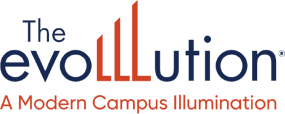Published on
Using Data to Drive Successful Learning Partnerships

Working in Corporate and Customized Training can be demanding at times, but the outcomes that are received at the end of the day can be extremely rewarding. In some respects, collecting and synthesizing data is one of the key components to ensuring that great learning solutions are generated.
I work with a multitude of organizations to help them with their learning initiatives. However, before beginning any learning program, I gather as much data as possible about the participants as I can; the nature of their work, the challenges they face and any gaps in the skills that they possess and where they need to be. This data is gathered from a variety of resources, but mainly from the organization itself. Sometimes the organizations have administered their own assessment and know exactly what kind of learning intervention is needed or wanted. In other situations, the organizations have a challenge but don’t know what specific direction to take.
The importance of gathering this information upfront is paramount to designing and developing a learning solution that will directly impact the learner and allow them to apply their learning immediately on the job. There should be direct correlation between the learning solution and the skills that the person obtains and takes back to the workplace.
The initial meeting with the corporate client can reveal some basic information: a challenge or problem a team is having, a process that is flawed, leaders or supervisors without the right skill sets. By having a complete understanding of an organization’s infrastructure, culture, processes, and resources, you can easily begin incorporating those items into the curriculum. Further consideration also needs to take into account how the learning initiatives align with the business strategies that are in place. While internal resources can provide data that is relevant and close to the problem, research should be gathered from external sources as well. Before meeting with a corporate client, one should review the client’s website, read their annual report, see what has been published in the local business journal or other business publications about this organization, its people, it’s financial status and culture.
To gain a clear understanding of the use of data, consider these three steps.
Step 1: What standards and indicators do you want your participants to learn?
- What does the data mean?
- What conclusions can one draw from the data?
- What do the numbers represent to the class as a whole?
Step 2: Look at the impact of the data on the classroom.
- What do we know about individual participants?
- What do we know about the participants as a whole?
- Do we have the same/high expectations for all participants?
- Is the current curriculum and instruction appropriate for all/some participants?
- Are we meeting the diverse learning needs of all the participants?
Step 3: Determine what the metrics are.
- Once I know what the participants need to learn, how do we make sure they have learned it?
- How do we alter our practices to meet all students’ learning needs?
- What reinforcements are in place to maintain a level of competency?
Data driven learning solutions are not a new novelty, yet many organizations choose to skip this vital step and jump right into a training program without investigating the root cause.
What happens to the data once the learning solution has been delivered? Every organization is different, but this data should be retained—preferably by a learning and development department in the event that similar challenges arise in the organization in the future.
Author Perspective: Administrator


